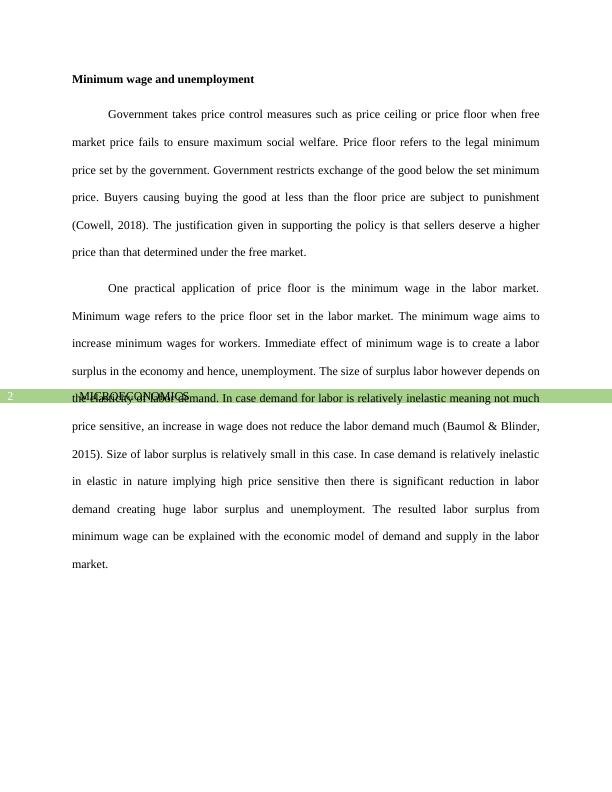Minimum Wage and Unemployment in Microeconomics
6 Pages703 Words325 Views
Added on 2022-11-19
About This Document
This article discusses the concept of minimum wage and its impact on unemployment in microeconomics. It explains how the government sets a price floor and how it affects the labor market. The article also includes a demand and supply model to explain the labor surplus resulted from minimum wage.
Minimum Wage and Unemployment in Microeconomics
Added on 2022-11-19
ShareRelated Documents
End of preview
Want to access all the pages? Upload your documents or become a member.
Impact of Minimum Wage and Rent Control on Labor Market and Housing Market
|6
|565
|78
Microeconomics Principles: Effects of Minimum Wage on Labor Market
|15
|2048
|50
Assignment on Microeconomics PDF
|11
|1606
|52
Economic Equilibrium Assignment
|17
|605
|132
Microeconomics - Gasoline’s Price Elasticity of Demand
|5
|806
|18
Assignment on Economic Principles
|8
|654
|81



